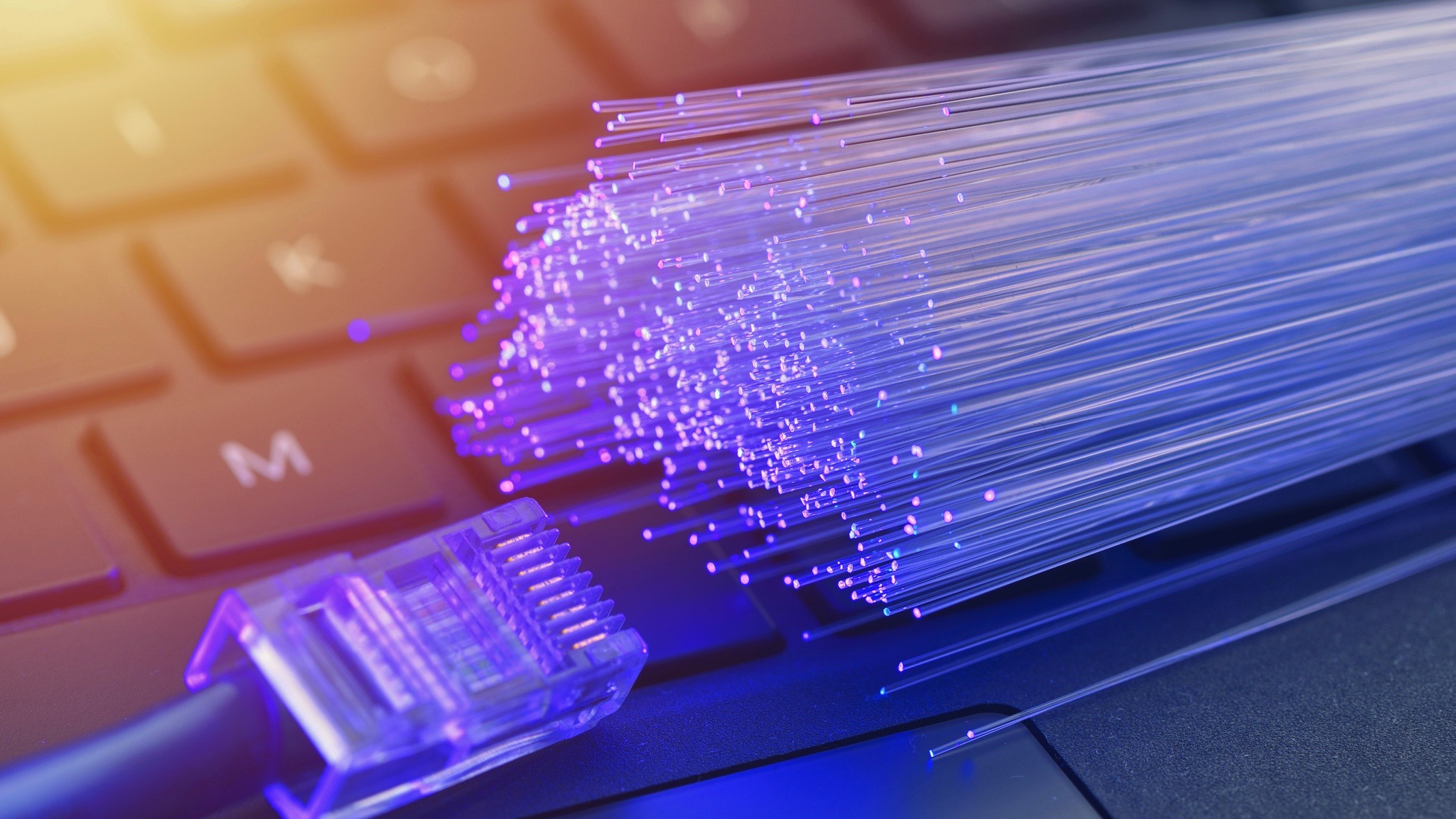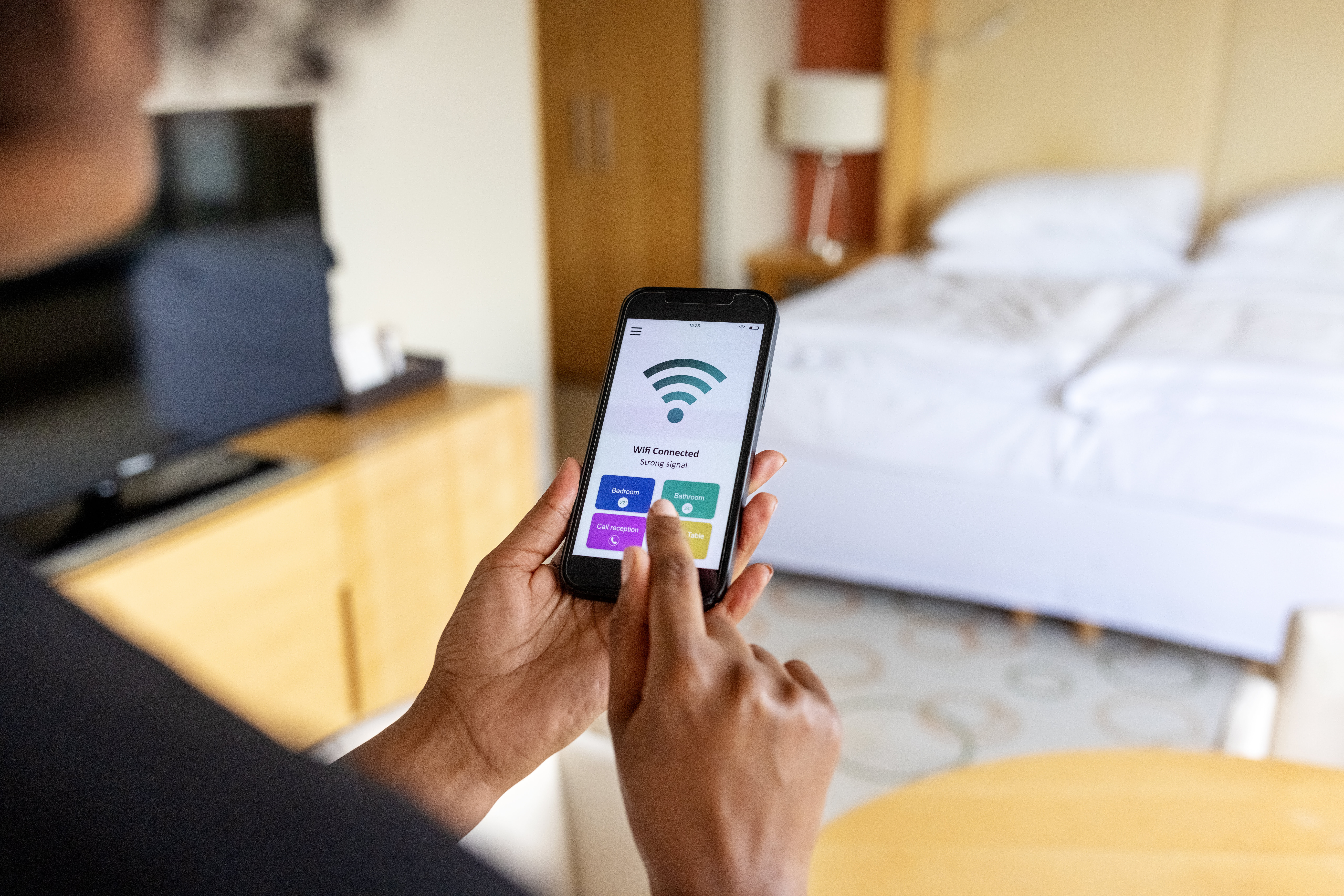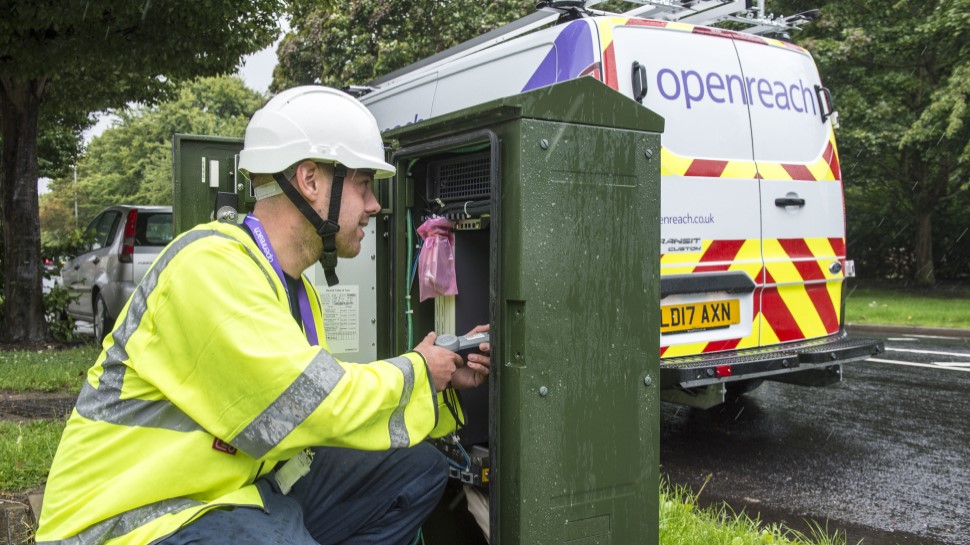What is Full Fibre broadband?
Learn everything you need to know about Full Fibre broadband to decide whether it's the right choice for you.

It's becoming increasingly common to see the term 'Full Fibre' being used to describe some of the options we have in today's selections of the best broadband deals.
Invariably this also appears to be in reference to the faster packages on offer from different internet service providers (ISPs). But, while there's some truth in the fact they are usually the faster choice, for those of us who aren't familiar with the latest broadband terminology, it can be difficult to know exactly what you 're getting with these deals.
So, in this guide, we've explained all there is to know about Full Fibre broadband. We cover everything from what it is, how it works, where you can get it, and as an added bonus, how to decide if such a deal is the right option for you.
So, what is Full Fibre broadband?
In simple terms, Full Fibre broadband is a type of broadband connection that uses fibre optic cables to deliver your internet. These cables run all the way from a broadband provider's internet exchange to your property - hence the use of the word 'Full'.
How does Full Fibre broadband work?
You can also see Full Fibre being called 'fibre-to-the-premises', ‘fibre-to-the-home’ or 'FTTP/FTTH' broadband, which again is in reference to how it works.
As we've mentioned earlier, the fibre optic cables run all the way from a broadband exchange to a property and these are capable of sending large amounts of data at light speed. This means that the average download speeds, average upload speeds and overall broadband performance can be much faster and reliable than other types of broadband. In some cases they can even be the same, these are known as ‘symmetrical broadband speeds’.
Full Fibre can theoretically deliver download speeds in excess of 1,000Mbps (or 1Gbps), but ISPs tend to package these up differently and often split out the speeds at different costs. Typically this can be anywhere from 100Mbps up to over 1Gbps.
Sign up for breaking news, reviews, opinion, top tech deals, and more.
For the 500+Mbps packages, you may also see Full Fibre being referred to as 'ultrafast' broadband, which is meant to reflect the quality and scale of these speeds.

What can you do online with Full Fibre?
When you include the fact that pretty much all Full Fibre packages come with unlimited data and these faster speeds, it means you can essentially do anything you want online. This includes:
- Online gaming
- Quickly downloading music, software, videos and apps
- Online calls and meetings
- Streaming in 4K/UHD
- Using all your favourite streaming apps
- Quickly uploading content to the cloud
- Using VR software
- Operating multiple smart devices and tech around your home or business
While it's fair to say you can also do some or all of these with certain other broadband types, the faster Full Fibre speeds (plus the dependable connection), means multiple devices can do all of the above simultaneously. Equally, smaller numbers of users on Full Fibre can enjoy uninterrupted and seamless experiences when online.
That said, it also applies that the faster your average download and upload speeds, the more secure and capable of handling multiple users your broadband will be.
What are the other advantages to Full Fibre?
If we look at the bigger picture, a Full Fibre connection can also offer lots of other benefits. A few examples include:
- Increased productivity for those working remotely
- No disruption at peak times
- Better energy efficiency (thanks to the faster data transfer)
- Superior quality of video and audio
- Stronger speed guarantees (subject to the ISP)
- Symmetrical upload and download speeds (again, subject to the ISP)

Can you get a phone line with Full Fibre?
This is a common question customers ask, as with Full Fibre broadband you don’t need a phone line or landline - like you do with ADSL or fibre broadband.
However, if you want a landline, or you want to keep your existing landline, it’s likely your broadband provider can offer you this even with a new Full Fibre connection. It might just be that your phone service is instead delivered via your broadband/WiFi.
We explain more about this in our ‘do I need a landline for broadband?’ guide.
What are the downsides of Full Fibre broadband?
While all of the above seems very positive, there are a couple of notable factors with Full Fibre that can put some consumers off. The main one here is the cost.
As a rule of thumb, you can say that the faster the broadband, the more expensive it will be. In other words, Full Fibre deals often tend to sit at the pricier end of the market - especially those that have speeds up to and above 1,000Mbps.
Another notable problem some of us face is that Full Fibre simply hasn't been rolled out in our area yet. Or, if it has been, we haven't had our properties connected to it yet.
The latest data shows that UK-wide the main network operator (Openreach) has now connected 12 million properties with a target of 25 million by the end of December 2026. If we look a bit closer at this with Ofcom’s most recent report on network coverage, 62% of residential premises can currently access Full Fibre connections and 80% can get ‘gigabit-capable’ speeds - but this also includes cable broadband networks.
Although this is a positive sign, it’s nowhere near the 98% UK coverage Openreach has with its fibre network.
How can I find out if I can get Full Fibre?
There are a few ways you can check to see if your property either has a Full Fibre connection, or if it's available for you to connect to if you want to get it.
- Check directly with your current provider
- Have a look at the latest Openreach rollout information
- Ask a neighbour to see what broadband they currently use
The first approach here is probably the most effective as not all ISPs use Openreach to supply their broadband, some have their own independent cable networks, such as Virgin Media. Going direct will also be a good way to learn more about if and when Full Fibre will be available to you.

Which providers offer Full Fibre broadband deals?
It used to be that only a limited selection of ISPs offered Full Fibre, but now you can find that the majority of the UK's most popular broadband providers offer these - largely because they use the same Openreach network.
However, there are also independent firms and even newer companies that have Full Fibre connections available on their own networks. Just a couple of examples include Hyperoptic, Gigaclear and Community Fibre - and technically Virgin Media qualifies for this category too.
If you are looking for the fastest Full Fibre, here are a few examples of the ultrafast and gigabit-capable speeds on offer with some top ISPs:
- BT Broadband - Full Fibre 900 - 900+Mbps
- Sky Broadband - Gigafast - 900+Mbps
- EE - its new 1.6Gbps package
- Plusnet - Full Fibre 900 - 900Mbps
- Shell Energy - Full Fibre 900 - 944Mbps
- Vodafone - Full Fibre - 910Mbps
- Hyperoptic - Hyperfast - 900+Mbps
How is Full Fibre installed on your property?
Each ISP will have their own procedures for connecting your property to its Full Fibre network. But, as an example, an Openreach installation will involve the following steps:
- You book a suitable installation date
- You determine where you want to cable to enter your property with your ISP
- An engineer will visit and run a fibre cable from the nearest cabinet to your property
- This will connect to a junction on an external wall
- Another fibre optic cable will then run from this to your chosen internal point
If it’s the case that you have a Full Fibre connection already - most new build homes for instance have to have them - it might be that you can ‘self install’ your broadband. By this we mean you can essentially receive your new Full Fibre-capable router or tech, plug it in and then easily connect to it.
You can learn more about home broadband installation processes here.
Is 'Full Fibre' the same as 'fibre' broadband?
This is another commonly asked question and the awkward answer is 'sort of'.
Full Fibre can be referred to as a 'fibre broadband' product, but really 'Full Fibre' is different to 'fibre' in that fibre refers to the older types of connections - specifically, slower 'fibre-to-the-cabinet' or 'FTTC' connections. As you can guess from the name, this only involves a partial fibre connection.
In our guide to fibre broadband you can learn more about this subject and the core differences between these broadband types.
Do I need Full Fibre?
Whether it's worth getting Full Fibre is of course down to your specific online needs and requirements for your broadband, as well as how much you can comfortably pay each month.
If you know you can definitely afford a more expensive Full Fibre package, then it does make sense to get one and receive the best performance online.
However, if you're unsure then you should check out our guide to finding the best broadband for your needs. Here we cover all the considerations you should make to help you determine which tariff will best suit your requirements and budget.
It's also worth looking through our rundown of the best broadband deals, as you might find a bargain if you're able to switch right now.

What does the future hold for Full Fibre?
As the broadband rollout we mentioned earlier shows, Full Fibre is on course to become the main type of broadband for the majority of buildings in the UK.
At the same time, we'll also eventually see the end of older broadband connection types that use copper wires - specifically ADSL and FTTC. Openreach has stated it plans to retire the majority of these lines and eventually they will be purely for hard to reach or remote areas.
When Full Fibre is the main option, we then may see the markets becoming more widespread and competitive, which could lead to more tariffs and a bigger choice of more affordable packages.
Where to find the best Full Fibre broadband deals
In the meantime, if you are looking to switch or upgrade your internet to Full Fibre, our best broadband deals guide is a great place to start.
Alongside this, we can even show you what options you have in your location if you enter your postcode into our widget below.
Although, as we mentioned, Full Fibre might not be in your area yet. So again we recommend doing a little research or contacting your provider to see when it will be available and what you need to do to get a connection installed into your property.

Rich is a freelance copywriter and content strategist with over 10 years' experience. His career has seen him work in-house and in various agencies, producing online and offline content marketing campaigns and copywriting for clients in the energy industry.